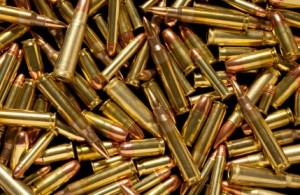 A casual look through your favorite gun supplier’s catalog might send you reeling, as most feature a dozen or more pages of ammunition for sale. How do you choose the right ammo for your handgun or rifle? The very first thing you need to know if you are new to firearms or defensive shooting is that you choose equipment based on the mission. What is your mission? Are you looking for target ammo, defense ammo, or something even more specific than that? Read on.
A casual look through your favorite gun supplier’s catalog might send you reeling, as most feature a dozen or more pages of ammunition for sale. How do you choose the right ammo for your handgun or rifle? The very first thing you need to know if you are new to firearms or defensive shooting is that you choose equipment based on the mission. What is your mission? Are you looking for target ammo, defense ammo, or something even more specific than that? Read on.
Some Basic Considerations
The reason there are pages and pages of ammunition types in most sporting goods catalogs is because each manufacturer makes a host of ammunition types for different purposes, and then there are dozens of manufacturers. Usually, the manufacturer itself is not an important consideration when choosing the right ammo. Most reputable manufacturers make great ammo, and you really can’t go wrong with any of them– it all comes down to brand partiality, and that is a personal decision. There are a couple of pitfalls to be aware of, however.
Surplus Ammunition: Surplus ammo is perfectly fine – in most cases. In order to buy with confidence, you need to know where this stuff comes from. The armies of the world usually control state-owned ammunition-manufacturing plants. One example is the Lake City Ammunition Plant, owned by the government. They make much of the M855 penetrator ammunition that is used in our country’s M4 and M16 rifles. Any factory runs best at capacity, and so the plant cranks out tons and tons of ammo every month. Occasionally, their customers (the military) don’t need as much, so they siphon off some production to the civilian populace. This is perfectly good military-spec ammo, and you need not be afraid of buying it. Where it can get a little sketchy is when the ammunition is really old, comes from a just-found cache of ammo somewhere in Eastern Europe, or some other similar circumstance. If you shoot something that takes Russian ammo like a Mosin Nagant or AK clone, you will no doubt be familiar with this situation. It’s buyer beware here – the former Soviet Union manufactured billions of rounds of ammo and stored it away (sometimes improperly). With the breakup of the Union, some of this ammo has made its way to the market over the years, and it’s definitely hit or miss.
Steel-Cased Ammunition: Once the exclusive domain of Russian-chambered weapons, steel-cased ammo is now making its way into other calibers as manufacturers see how well it sells. Recall that the case of most ammunition cartridges is made of brass, which is one of the most expensive parts of the individual round. As metal prices soar, brass soars also, raising the price of ammo. To combat this, manufacturers use a cheap steel case instead. This case costs a tiny fraction of what a brass case would, thus making the ammo cheaper. There’s only one problem – it’s harder on the gun. Steel is much harder than brass, and thus you accelerate wear on the weapon while saving money on ammo. Not a good compromise. Ten years ago, brands like Tula and Silver Bear made steel-case ammo for primarily Russian guns like the AK and SKS. These are primitive and rugged weapons that can take lots of abuse. They ingested the steel case rounds happily. Now, you can get steel-case ammo in lots of other calibers, including common pistol calibers as well. That’s not a good thing. If all the other brands you are looking at are say, $19.99 for a box of fifty rounds, and then you see another brand for $12.99, you can bet they are steel-cased. Don’t use this stuff on high-end weapons.
Mission First
Always load up on the right ammo for the job. Every mission has its own requirements:
- Target practice, where you will expend hundreds of rounds in your pursuit of perfection, screams for cheap ball ammunition. These are usually bulk packs of low-performance ammunition. They are designed for target practice and usually have low bullet weights and full metal jackets. Again, avoid steel cases.
- Home defense, where you should have the best, most expensive, highest-performance ammo in your gun. This means hollow points of some form or another, from a reputable manufacturer. You are, in fact, entrusting your life to this ammo.
So what happens if a burglar breaks in when you have the gun loaded with target ball ammo? The short answer is shoot – even target ammo is perfectly capable of killing a person. The performance difference between a hollow point and ball ammunition is simply not that big of a deal. Sure, hollow points create a larger wound channel, have more stopping power, and are less likely to harm people behind the target, but another round or two of ball ammo will usually do the trick. Also remember our brethren in the military shoot people all day long with ball ammo.
Ammo doesn’t have to be confusing if you just ask yourself what you need it for and then shop accordingly. Avoid any ammo that seems suspect, and you should be in good shape.
©2012 Off the Grid News
 Off The Grid News Better Ideas For Off The Grid Living
Off The Grid News Better Ideas For Off The Grid Living



